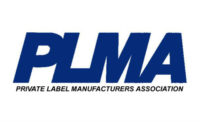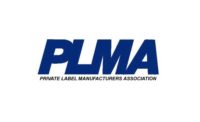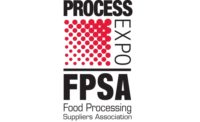The Private Label Manufacturers Association has announced that its annual Private Label Trade Show, taking place in-person November 14–16, 2021, in Chicago, will feature expanded participation by foodservice suppliers across all food, nonfood and beverage categories.
Overall, more than 2,000 exhibitors and over 5,000 visitors are expected at the show, which has always been an important stop for manufacturers and buyers for foodservice. Among buyers from all major retail chains, you might spy representatives from some the nation’s largest restaurant suppliers on the trade show floors as well. Most, including the likes of Sysco, US Foods, Aramark, Maclean and others, have highly developed brand programs, ranging from value labels in basic food items, nonfood and takeout packaging to proprietary labels that might include proprietary coffee blends, farm raised meat and produce, craft cheese and artisan bakery items, sustainably sourced seafood, authentic Italian, Latin and Asian specialty items, and more.
As the pandemic recedes, all signs are pointing to greater growth and success for private label in foodservice, according to PLMA Vice President Anthony Aloia.
“Consumers have become more accustomed to finding freshly made, restaurant-style meals in supermarkets—whether prepared by in-store bakery, deli and meat departments, or brought in from a ghost kitchen or commissary—which are sold at extremely reasonable prices under the retailer’s own brands,” Aloia said.
The spike in demand for sanitary pre-packaging of ready-to-eat prepared foods for exhausted home cooks, along with more convenient snacks and meals to-go, made grocery stores more competitive with restaurant takeout than ever before. Meanwhile, a surge of in-app and online ordering for curbside pick-up and delivery platforms further blurred the boundaries between retail grocery, convenience and restaurant channels.
Retailers have stepped up their game with the deployment of new mobile purchasing, shop-from-home, and last-mile delivery options. Simultaneously, many best-in-class retail chains expanded their convenience-oriented offerings for prepared, kitchen and table-ready meals packaged for pickup or delivery, in addition to items packaged for grab-and-go in stores.
The grocery channel has adopted a number of consumer-driven restaurant food trends. For example, there’s been increased emphasis on farm fresh and locally sourced ingredients. With maintaining healthier lifestyles now top-of-mind for many consumers, natural, organic and minimally processed foods continue to be popular for fresh departments and foodservice, even as more plant-based, vegetarian and vegan options are taking their place alongside. And across all these trends, there has been rising interest in restaurant-quality menus featuring international cuisines, as well as regional and ethnic specialties that offer shoppers an opportunity to relive or replace the restaurant experience in homes.
As the pendulum swings back towards normalcy in months ahead, restaurants, for their part—whether fast food, takeout, fast-casual or fine dining—are sure to feel pressured to engage the challenge posed by all this expansion of foodservice at retail. Expect them to fight to woo their customers back. Ordering convenience, and delivery will be among the battle lines for fast food and takeout. Less crowding, touchless payments and visible sanitation will no doubt continue to matter for in-dining experiences. But coinciding with the additional expense for such improvements and a possible rise in labor costs, we can also expect to see more aggressive promotions and lower prices.
Taken together, these likelihoods are sure to make all manner of private label products from their foodservice suppliers increasingly attractive to restauranteurs from a margin perspective.






